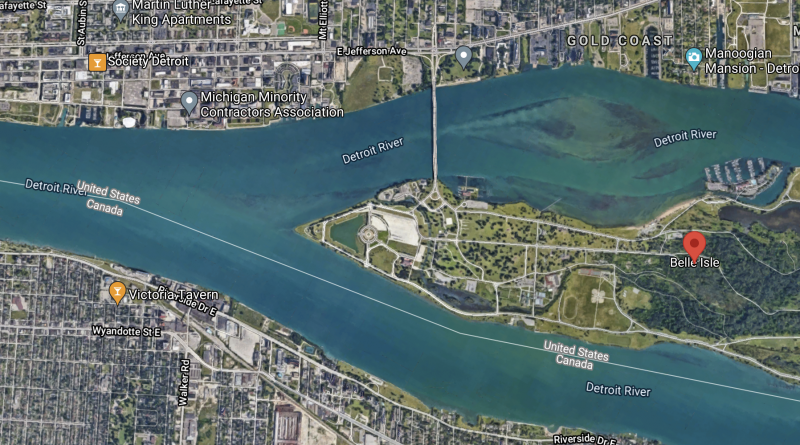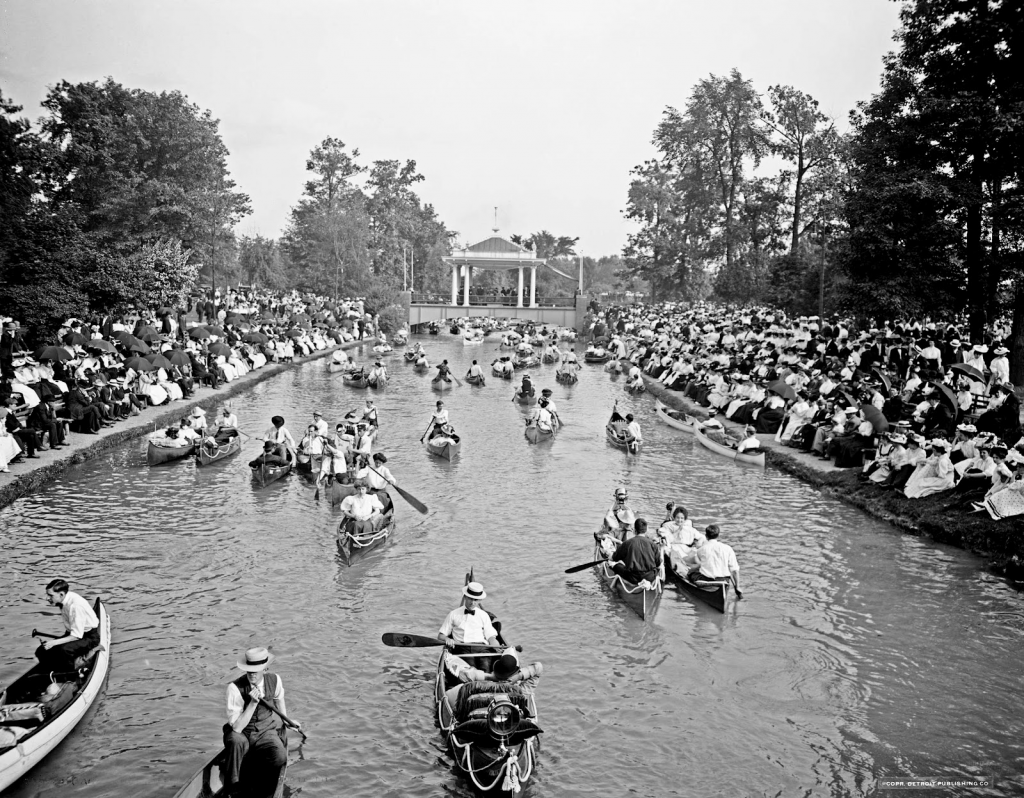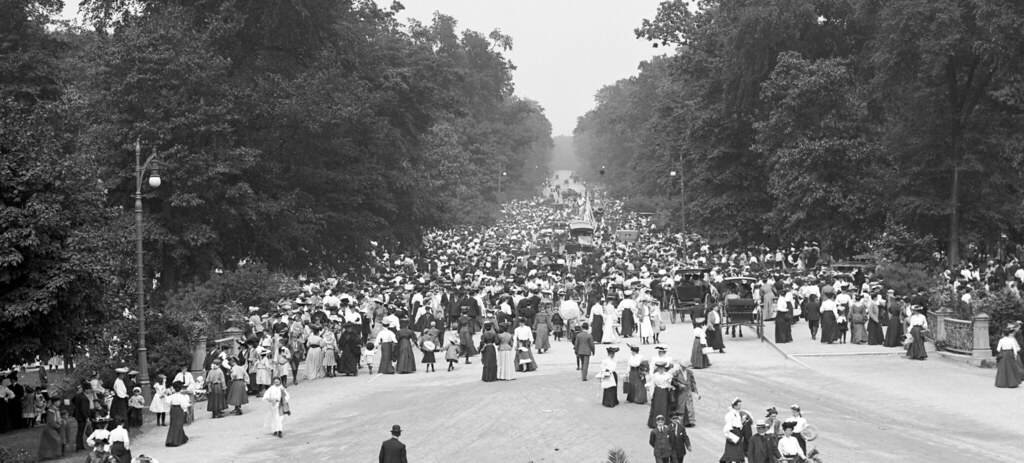“MDOT will be the ultimate decider on all roadway decisions.”
It’s not just a trope. It’s an actual line that was written. The writer of said line was Ronald Olson, Chief of Parks and Recreation with Michigan’s Department of Natural Resources, responding to Handbuilt co-conspirator Dave Gifford. Dave is a board member at Transportation Riders United, one of Detroit’s dynamic duo of transit advocacy organizations, along with the Motor City Freedom Riders. Dave recently wrote a public comment to the DNR about Belle Isle, pointing out the lack of transit or bike connectivity to the island.
“I’ve been thinking a lot about how inaccessible the island is to people who ride transit and those who don’t own bikes,” Dave explained to us via e-mail. “It’s no problem if you own a vehicle and can transport your bike onto the island. You can reach anything. But for so many residents, much of the island remains out of reach.” Olson seemed to contest Dave’s comment by saying that “Belle Isle Park roadways have been striped for bicycle traffic for some time,” as though a sharrow is, uh, actually infrastructure. Is this sufficient, Ron?
We don’t mind sitting in traffic for what amounts to hundreds of billions of dollars per year in lost productivity, to say nothing of air pollution but it’s too much for every working adult to pay an extra 25 cents per day in property taxes to support modern, regional infrastructure.
Ron wouldn’t weigh in on the answer to that question. But he did say that “Regarding MoGo Detroit, we have been approached by multiple organizations concerning transportation options for the park. It has been decided that until a study is completed, the park will continue its current operations.” In other words? A bunch of people want change! But in the meantime, said people, piss off. The use of the passive voice– “it has been decided”- is an especial tactic of an expert handwringer.
This vexed me so that I made a meme about it (below) to capture how Michigan thinks of infrastructure and transportation innovation.

“The Island Is At Capacity”
To the uninitiated, Belle Isle is Detroit’s crown jewel, and the only park in the city that is both large and central. To get there? There’s a painted bike lane. There’s no bus to get there. There are two car lanes in either direction onto the island, which become, depends on where you are, three, four, or five car lanes. As such, the island clogs with car traffic every sunny weekend. Induced demand! This was certainly the case yesterday, when the state police– who sort of have jurisdiction over the park as a state asset- temporarily closed the island to vehicular traffic because it was “at capacity.” This is a kind of absurd idea. The island has reached a maximum of cars?
Detroiters– and Americans at large, certainly- absolutely love sitting in their cars. It’s a point of pride for our society. We don’t mind sitting in traffic for what amounts to hundreds of billions of dollars per year in lost productivity, to say nothing of air pollution– by most estimates, idling accounts for more than a third of a vehicle’s entire runtime- but, of course, it’s too much for every working adult to pay an extra 25 cents per day in property taxes to support modern, regional infrastructure. Ahem. Anyway.
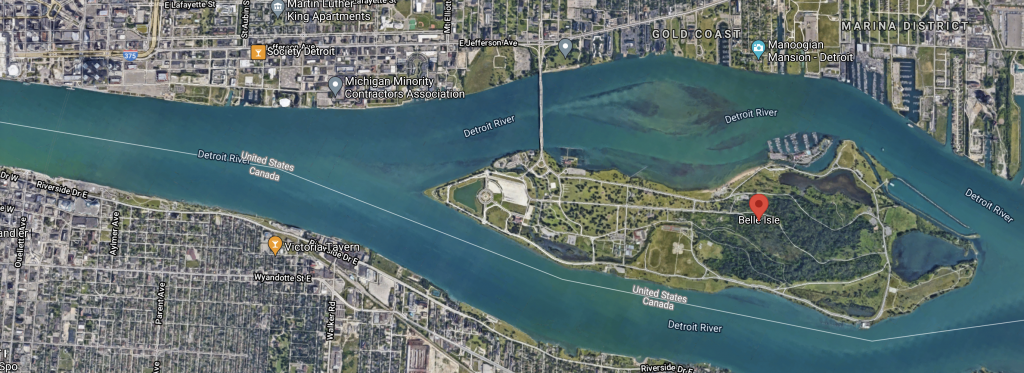
Proposing A Simple Enough Fix
There are some simple enough fixes. Ready for this? One idea: Charge a $1 entry fee to any car driving onto the island. Yes, I know that people already pay for state recreation passes. Or at least some people do– access to Belle Isle is largely unrestricted. To counterbalance the cries of oppression from the car-obsessed who’d say that they’re concerned with the equity implications, provide free access on a bus that circulates the island’s major thoroughfare, carrying passengers from the connecting DDOT route along Jefferson. Cars back up in either direction on Jefferson when traffic to and from the island is heavy, so this would be a welcome alternative.
Oh, and then there’s the savings. In heavy traffic, a trip to Belle Isle could take a full hour, including the time of idling while you’re waiting in traffic. This would use about a half gallon of gasoline, or, about $1.75. If five hundred drivers deal with this on a peak demand day, that’s $437.50 in gas. A congestion fee would add $1 per car, so now we’re at $937.50. Let’s think about externalities, too! A gallon of gasoline produces about 20 lbs. of carbon dioxide, so, 500 cars per day dealing with this congestion would create 2.5 tons of carbon. Current estimates are that this “costs” around $51 for a ton of carbon, so, $127.50. We’re up at $1065 per day in overall costs.
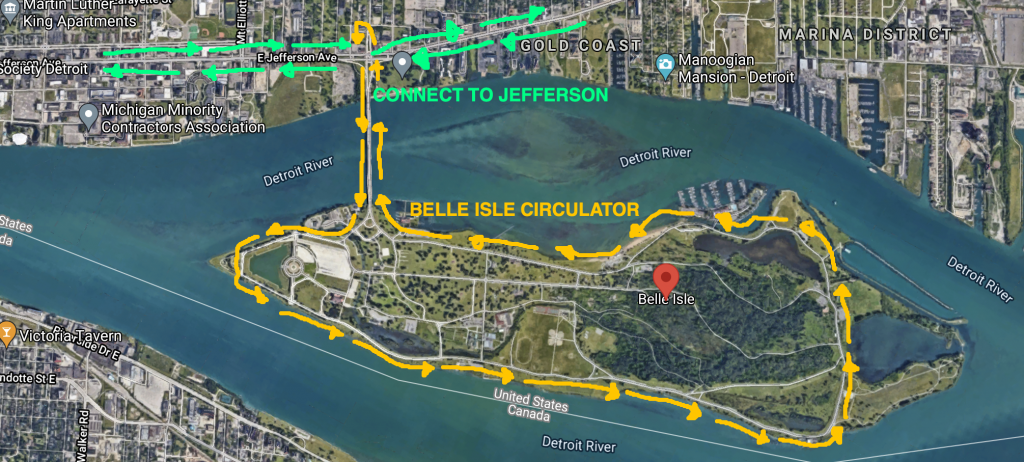
No Externalities, No Problem
Now, it costs $100-some per hour to operate a bus. At $150 an hour, this gives us at least 6 hours of continuous bus operation. Oh, and the bus is free. How does that work? Well, if it’s saving someone else from spending $1,065 and it costs less than $1065 to operate for a day, then it seems like a good tradeoff. This is to say nothing about the nastier emissions that we’re saving from entering the air. Cleaner air, less traffic, better access for emergency vehicles, etc.
Is it gonna happen? Well, no. MDOT will be the ultimate decider on roadway decisions. For an agency that loves adding lane miles whenever they can, seems like this is pretty low on their priority list. DDOT, for their part, would likely run into some jurisdictional headbutting. Either way, it’s fun to think about, and something we should probably consider to protect our city’s crown jewel of a park for future generations.
MDOT had not responded to a request for comment as of the time of publication.

